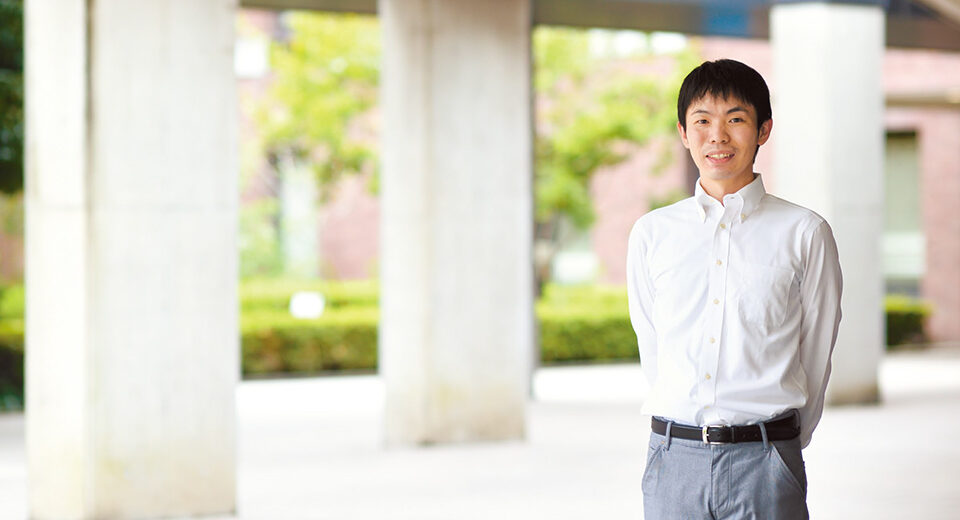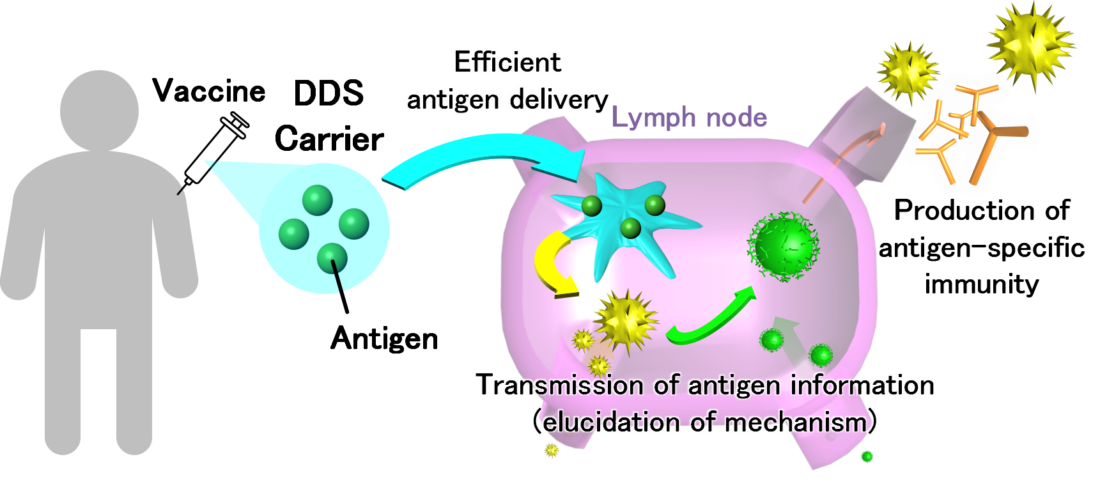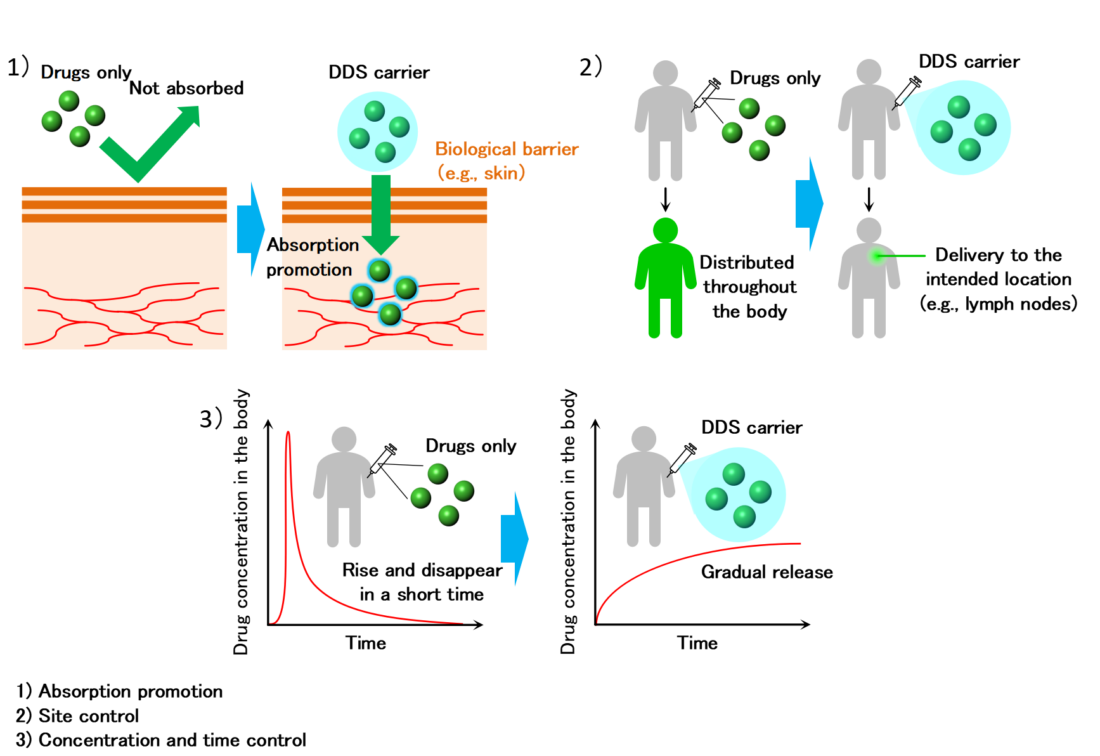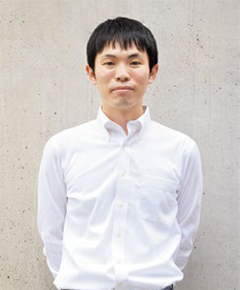Interview with researchers 7 Creating delivery systems through chemical engineering to reduce patient stress

- Interview Yoshiro Tahara
- Associate Professor,Faculty of Science and Engineering,
Department of Chemical Engineering and Materials Science
Controlling the site, amount, and time to maximize the efficacy of pharmaceuticals
The efficacy of medications depends on how and where they are administered. While there are many methods available for administering drugs, ranging from oral administration to injections, at times, drugs affect unrelated areas of the body, resulting in side effects. The drug delivery system (DDS) is a technology that addresses such drawbacks posed by medications.
DDS, a technology that delivers the appropriate amount of a pharmaceutical’s active ingredients to the appropriate site at the right time, not only increases its therapeutic effect but also decreases the stress on the patients by reducing side effects and required doses.
“I have been studying DDS with an engineering-based approach for over ten years,” says Associate Professor Dr. Tahara. “I have been working on developing and evaluating new materials (gels and emulsions) that can be applied in transdermal delivery, immunity DDS (vaccine, cancer immunity), and regenerative medicine.” He predicts that research on DDS based on biochemical engineering will undoubtedly expand. “In recent years, not only are researchers working on the transformation of the molecular structure of the drug substance itself, but also actively developing DDS carriers (e.g., fine particles) to encapsulate the drugs. Various approaches to DDS are being developed through the fusion of a wide range of fields, including science and engineering, medicine, dentistry, and pharmacy.”
Dr. Tahara stands at the forefront of a rapidly developing research field. His motivation to become a DDS researcher stems from his engagement in research during his student years concerning transdermal delivery methods, which allow drugs to penetrate the skin. Since transdermal delivery of drugs cause less stress on the patients, the pharmaceutical industry has been enthusiastically engaged in developing efficient transdermal delivery technologies. As Dr. Tahara explains, “People with diabetes administer insulin for treatment through injection, which works to lower the blood sugar levels. However, since the stress from the injections or needles for the patients is not insignificant, the development of transdermal delivery, such as an ointment, is desired. However, the corneum structure of the outermost layer of one’s skin has a highly hydrophobic structure. Thus, pharmaceuticals consisting of proteins such as insulin cannot be easily made into effective ointments as they are more easily soluble in water and have a high molecular weight. Back then, a new technology developed in our lab that produces nano-sized particles by coating the hydrophilic protein with a hydrophobic surfactant was found to be effective.” As a result, he succeeded in dispersing proteins, such as insulin, in an oil-based solution (a component that promotes percutaneous absorption).
The elucidation of the fundamental mechanisms is the basis of the widely applicable DDS research
DDS has the potential to play an active role in all aspects of drug administration. DDS carriers (fine particles) are also being developed for vaccine treatment, in which antigens derived from pathogens are administered to the body to enhance and memorize antigen-specific immunity (Figure 1). “We are currently working on the development of a DDS carrier for vaccine injections,” says Dr. Tahara. “We aim to elucidate efficient antigen delivery pathways and antigen information transmission mechanisms by observing differences in immune responses using DDS carriers that can efficiently deliver antigens to lymph nodes.”

The basis of Dr. Tahara’s research, which is widely applicable across the medical field, is the elucidation of the basic mechanism concerning DDS. The aim of the Examination of Effective Administration Methods of Peptide Vaccines, as adopted by the COVID-19 Research Project, is to be prepared to present the optimal DDS when an important peptide sequence is discovered as an immunogen. “Each disease has a peptide sequence which is recognized as the key antigen,” says Dr. Tahara. “If we are able to determine the most appropriate administration method for the vaccine carrying that specific sequence, and if we can elucidate on the transmission mechanism of the antigen information after its administration, we could apply this not only to this novel Coronavirus but also to other new infectious diseases as well.”
Dr. Tahara has experience in researching regenerative medicine using biomaterials. In this field, which aims to regenerate lost organs and tissue, research is underway to transplant cells and scaffold materials based on glued cells cultured outside the body. Dr. Tahara explains, “I succeeded in creating a cell-adhesive gel of the same shape and size as a mouse femur during my post-doctoral research years. After that, via joint research, other doctors also succeeded in efficiently gluing fibroblasts and culturing it using this gel and inducing differentiation into osteoblasts.” Artificial 3D bone tissue transplantation plays an important role in treating patients with bone disease, such as those with skeletal deformities and joint disorders. “Understanding material adsorption in biological materials is an essential backdrop to this technology. Based on the experience I cultivated through this research, I wish to develop new gels with other functionalities and tackle areas in regenerative medicine,” he elucidates. Based on his experience, we can expect his findings to be applied in regenerative medicine through chemical engineering.
Advancing the way to practical application by utilizing pharmaceutical additives
What is particularly noteworthy about Dr. Tahara, a researcher in the field of basic research, is that his approach to research considers and involves industry-academia collaboration. “I am trying to develop a transdermal delivery system and DDS carriers by primarily combining pharmaceutical additives which their safety has been confirmed,” he states. “I use medical-grade ingredients with confirmed safety so that this can become a viable product as soon as possible.” While he pursues basic research, he is always consciously devising ways that will lead to practical use.
Dr. Tahara joins academic associations in fields other than his own to find new research themes. “As I participate in such groups, I get to know researchers in those fields personally. When we share information about our challenges and pursuits, sometimes we realize that research in our field could potentially resolve the challenges in others.” Medical researchers and researchers from the dental field have currently reached out for collaboration in joint research, each in their respective fields. We cannot keep our eyes off Dr. Tahara’s research activities, as he aims to contribute to society through DDS research.
Conceptual diagram of DDS


